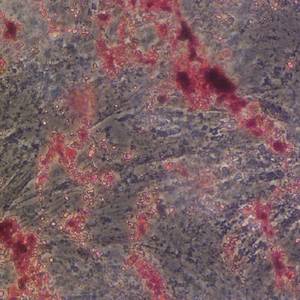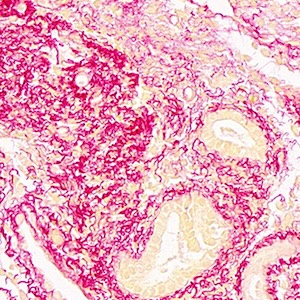Spinosin ameliorates osteoarthritis through enhancing the Nrf2/HO-1 signaling pathway
Accepted: 1 May 2024
HTML: 6
All claims expressed in this article are solely those of the authors and do not necessarily represent those of their affiliated organizations, or those of the publisher, the editors and the reviewers. Any product that may be evaluated in this article or claim that may be made by its manufacturer is not guaranteed or endorsed by the publisher.
Authors
Osteoarthritis (OA) is a common degenerative joint disease in the elderly, while oxidative stress-induced chondrocyte degeneration plays a key role in the pathologic progression of OA. One possible reason is that the expression of nuclear factor erythroid 2-related factor 2 (Nrf2), which acts as the intracellular defense factor against oxidative stress, is significantly inhibited in chondrocytes. Spinosin (SPI) is a potent Nrf2 agonist, but its effect on OA is still unknown. In this study, we found that SPI can alleviate tert-Butyl hydroperoxide (TBHP)-induced extracellular matrix degradation of chondrocytes. Additionally, SPI can effectively activate Nrf2, heme oxygenase-1 (HO-1), and NADPH quinone oxidoreductase 1 (NQO1) in chondrocytes under the TBHP environment. When Nrf2 was silenced by siRNA, the cartilage protective effect of SPI was also weakened. Finally, SPI showed good alleviative effects on OA in mice. Thus, SPI can ameliorate oxidative stress-induced chondrocyte dysfunction and exhibit a chondroprotective effect through activating the Nrf2/HO-1 pathway, which may provide a novel and promising option for the treatment of OA.
Downloads
Publication Facts
Reviewer profiles N/A
Author statements
- Editor & editorial board
-
profiles
- Academic society
- N/A
- Publisher
- PAGEPress Publications, Pavia, Italy
To learn about these publication facts, click
PF is maintained by the Public Knowledge Project
Ethics Approval
This study was approved by the Ethics Committee and the Institutional Animal Care and Use Committee of Nanjing Drum Tower Hospital, the Affiliated Hospital of Nanjing University Medical SchoolSupporting Agencies
Changzhou Sci&Tech Program, Changzhou UniversityHow to Cite

This work is licensed under a Creative Commons Attribution-NonCommercial 4.0 International License.
PAGEPress has chosen to apply the Creative Commons Attribution NonCommercial 4.0 International License (CC BY-NC 4.0) to all manuscripts to be published.
Similar Articles
- S. Nemolato, T. Cabras, M.U. Fanari, F. Cau, D. Fanni, C. Gerosa, B. Manconi, I. Messana, M. Castagnola, G. Faa, Immunoreactivity of thymosin beta 4 in human foetal and adult genitourinary tract , European Journal of Histochemistry: Vol. 54 No. 4 (2010)
- W.J. Liu, J. Yang, Preferentially regulated expression of connexin 43 in the developing spiral ganglion neurons and afferent terminals in post-natal rat cochlea , European Journal of Histochemistry: Vol. 59 No. 1 (2015)
You may also start an advanced similarity search for this article.

 https://doi.org/10.4081/ejh.2024.4033
https://doi.org/10.4081/ejh.2024.4033














